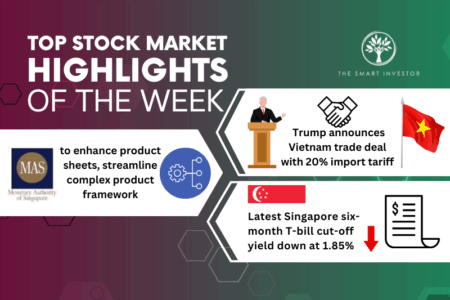United Overseas Bank Ltd (SGX: U11), or UOB, is on a roll.
The bank had just reported a stellar set of earnings for 2022, with net profit scaling a new all-time high at S$4.6 billion, up 12% year on year.
The stronger performance came about because of a surge in interest rates that propelled the lender’s net interest margin (NIM) and net interest income (NII) significantly higher.
In line with the good results, UOB declared a final dividend of S$0.75, taking its 2022 dividend to S$1.35.
Income-seeking investors are looking forward to a further dividend increase if the bank continues to do well.
With UOB riding on the wave of higher interest rates, the big question is whether the bank can raise its dividend for 2023.
We dig deeper to find out.
Sustained tailwinds
The US Federal Reserve’s fight against surging inflation is far from over.
Earlier this month, the central bank’s chairman, Jerome Powell, warned that interest rates are likely to head higher than expected.
With economic data coming in stronger than anticipated, price levels will likely be sustained as the unemployment rate remained near its 50-year low at 3.6%.
There are two implications here.
One is that the pace of interest rate rises could gather steam if the central bank feels that inflation remains high.
Second, and more importantly, the peak level for rates could be raised to a higher level than originally intended.
These trends bode well for UOB as they should buoy its NIM and enable it to generate higher levels of NII.
Management’s outlook remains sanguine as it expects NIM to stay around 2.2% accompanied by mid-single-digit year on year loan growth.
This tailwind, along with higher fee income arising from China’s reopening, should help to boost UOB’s total income for 2023.
Hot in the city
Let’s not forget that UOB has another catalyst up its sleeve.
Back in January last year, it announced the acquisition of Citigroup’s (NYSE: C) consumer banking business in four countries – Malaysia, Indonesia, Thailand, and Vietnam.
This purchase looks set to boost its customer base and strengthen its franchise in these countries.
This deal is also poised to add to UOB’s earnings from this year onwards.
The acquisition has already been completed in both Malaysia and Thailand in November last year, while UOB Vietnam announced just this month that it had completed the acquisition.
The completion for Indonesia is slated to occur before the end of 2023.
The flip side: A pullback in investments and higher provisions
Unfortunately, higher interest rates also come with other ramifications.
Businesses that once relied on cheap financing to grow and expand may pull back their capital spending as rates surge.
These include many start-ups, technology companies and high-growth businesses that thrived when interest rates were near rock-bottom levels.
Elsewhere, highly-indebted companies may also face problems servicing their loans as interest rates creep higher.
Some may be unable to roll over their loans at higher rates or may not generate sufficient cash flow to service their debt burden.
When this happens, banks such as UOB will be saddled with potential bad loans and have to make higher general and specific provisions.
These provisions will flow directly down to the bank’s bottom line, crimping its net profit.
A potential contagion
Just last week, Silicon Valley Bank (SVB) became the largest US bank to go belly up since the Global Financial Crisis in 2008.
A crisis of confidence had led to a run on the bank, leaving it insolvent.
SVB specialised in financing start-ups and was the 16th largest US bank by assets.
Just days later, Signature Bank, another mid-sized US bank, was shut by New York regulators, making it the US’ third-largest bank collapse.
Investors are now worried that there could be a contagion effect that may have adverse effects on other banks.
As a result, the yields on government bonds around the world have tumbled, implying that investors are pricing in an impending recession.
The turmoil could affect customer confidence in banks and lead to slower loan growth amid an attempt by businesses to diversify their risks by spreading their deposits among different banks.
Get Smart: Many uncertainties clouding the outlook
UOB has several tailwinds going its ways such as rising interest rates, potentially higher fee income and its Citigroup integration.
However, uncertainties remain as to whether such rates may result in anaemic loan growth and a spike in provisions.
The recent collapse of both SVB and Signature Bank may also cast a pall on the banking sector, and its contagion effect is uncertain as of now.
Hence, investors will need to monitor what happens during the rest of 2023 before they can get a clearer idea of how well UOB’s business will perform.
If you’re looking to invest in 2023, our latest FREE report can guide you. It shows you how to find dividend stocks in SGX, and a nearly fool-proof way of building your portfolio. Many people love dividend investing, but few truly know how to profit from it consistently. Click the link here to download our new report and discover the secrets!
Follow us on Facebook and Telegram for the latest investing news and analyses!
Disclosure: Royston Yang does not own shares in any of the companies mentioned.





